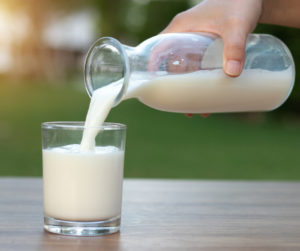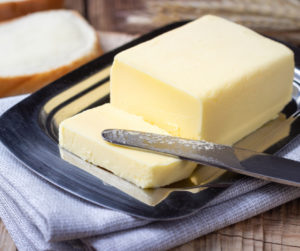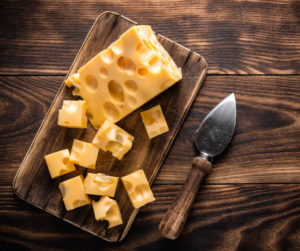The best part about dairy is the endless variety of products. Just thinking about milk to drink, there’s whole, 2%, 1%, skim, A2, lactose-free, high- protein, non- homogenized, and depending on your state laws, even raw milk might be an option. Healthy diets begin and include dairy.
In the second half of the 20th century, dairy and saturated fat got a bad rap when President Eisenhower suffered from a heart attack. After that, heart disease quickly became the nation’s biggest problem needing attention. Apparently, everyone forgot that he was President as America was recovering from World War 2 and smoked four packs of cigarettes a day.
One of the doctors working on the heart disease epidemic was an epidemiologist named Ancel Keys of the University of Minnesota. Keys was sure that saturated fat was the cause of heart problems and especially led to President Eisenhower’s heart attack. The low-fat fad started and Americans kicked butter to the curb as well as lard, tallow and other animal-based products. In January of 1961, Ancel Keys was featured on the cover of Time Magazine for his work fighting heart disease.
It turns out, avoiding dairy can cause more problems than help. More and more, I’m seeing the line “Don’t Blame Butter for What the Bread Did” floating around social media. Believe it or not, butter adorned the cover of June 2014 issue of Time Magazine. After 50-some years of avoiding butter and saturated fat, our waists are bigger, cancer and diabetes are running rampant and the heart disease problem never went away. According to @nutritionwithJudy, butter contains 10 essential vitamins and 14 essential minerals. Butter also contains stearic acid, which smooths and softens skin and can reduce LDL cholesterol.
Speaking of cholesterol, did you know that 70% of people having heart attacks have normal or low cholesterol? Low cholesterol can also cause depression and even violent behavior. Every cell in our body has cholesterol in it and is essential for our health. Butter is best eaten as a solid or cooked at a low or medium heat. If you’re looking for a high heat fat or oil to cook with, use ghee instead. Ghee is clarified butter and works well with high heat-cooking.
Dr. Ken Berry has a great video on YouTube and he likes to tell his patients “the harder the dairy product, the better.” He says to avoid lactose, even if you’re not lactose intolerant, because it is still a sugar that can cause an insulin spike and lead to weight gain.
According to Dr. Berry, “Skim milk is the absolute worst dairy as all of the healthy fat is removed and all that’s left is high levels of lactose.” I have a friend that mixes water with heavy whipping cream for his cereal to get the consistency and flavor of milk while avoiding lactose altogether. In addition, most cereals are fortified with fat soluble vitamins and minerals. And if eaten with low or no fat milk, our body can’t utilize the added nutrients.
We can’t talk about dairy products without adding some cheese. While most cheese has very little lactose left, the harder and longer-aged cheeses will have the least bit of lactose. Cheese makes a perfect snack and can be a staple in a low-carb or keto lifestyle.
Cheese is also full of calcium as well as Vitamins D3 and K2, which are all helpful for optimal bone health. Cheese is also a prime source of protein. Protein will help you stay fuller longer and is necessary to build and maintain almost every part of our body. One string cheese has seven grams of protein and one cup of cottage cheese has a whopping 25 grams of protein.
I recently attended a workshop on cultured dairy with Laura Poe Mathes, a Registered Dietitian. We learned how to make yogurt, kefir, cultured cream and butter, and cheese. Laura recommends at least one spoonful of fermented food at every meal to help with digestion. Yogurt and kefir, as well as fermented veggies, are full of probiotics that can aid in immune support, digestion and a healthy gut microbiome. Just check the nutrition label, some yogurts have a high-level of added sugar that counteract the benefits.
If you’re looking to dig a little deeper into why you should be adding more dairy to your diet, a great book full of information is “The Big Fat Surprise: Why Butter, Meat and Cheese Belong in a Healthy Diet” by Nina Teicholz. Next time you add butter or cheese to your plate, think about the great things you’re doing to improve your health.




